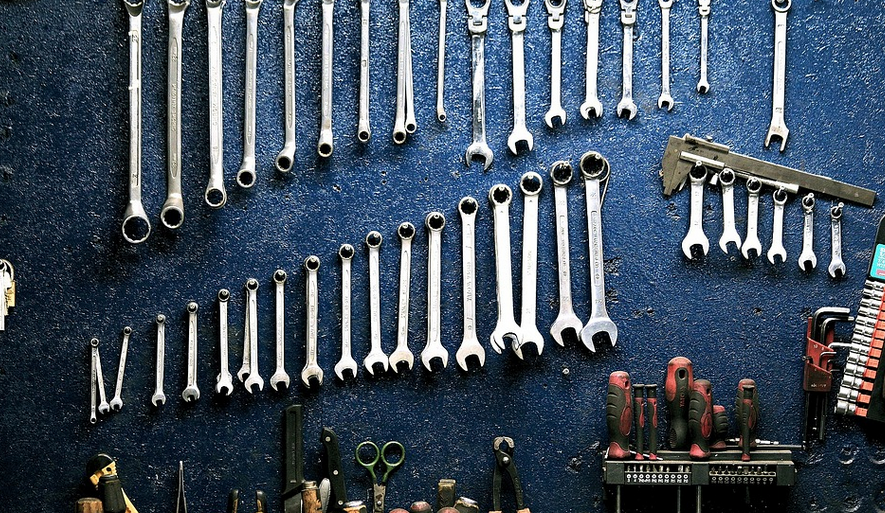The Allure of Diamond Plate
Aluminum diamond plate, with its distinct checkerboard pattern, has become a popular choice for various applications. It’s known for its strength, durability, and ability to handle high wear and tear. From construction sites to workshops and even home projects, diamond plate offers a resilient surface that can stand the test of time.
Why Aluminum Diamond Plate?
The appeal of aluminum diamond plate lies in its unique combination of properties. Its lightweight nature allows for easy handling, making it a preferred choice for various transportation needs like trailers and industrial vehicles. Furthermore, its high corrosion resistance makes it ideal for environments prone to moisture or harsh weather conditions.
Cutting Aluminum Diamond Plate: A Straightforward Process
The beauty of aluminum diamond plate lies in its straightforward process. While the technicalities involve specialized tools and techniques, the ultimate goal is to achieve precise cuts that align with your desired form. Here’s a comprehensive guide on how to cut aluminum diamond plate effectively:
Understanding Your Choices
Before commencing any cutting process, it’s crucial to understand the type of tool you intend to use. Here’s a quick breakdown of commonly used tools and their application: * **Bandsaw:** Ideal for making straight cuts on thicker diamond plates. You can utilize a variety of blade sizes depending on the desired depth and shape of your cut. * **Plasma Cutter:** This high-powered tool delivers precise, clean cuts ideal for intricate designs or large sections of aluminum diamond plate. It offers greater control over the cutting process and is particularly useful when working with thicker materials. * **Laser Cutting Machine:** For those seeking extreme precision and intricate details, laser cutters stand out as a remarkable option. They’re capable of creating complex shapes and fine lines without damaging the surface of the aluminum diamond plate.
Choosing Your Tools: A Matter of Precision and Efficiency
The right tool can drastically impact the quality and efficiency of your cutting process. Here’s what to consider when selecting your tools: * **Material Thickness:** Different tools are better suited for varying thicknesses of aluminum diamond plate. Thicker plates require specialized cutters and machines, while thinner ones can be handled with less power-intensive equipment like a hand saw. * **Shape Complexity:** If you need intricate cutouts or complex shapes, laser cutting machines or plasma cutters offer superior precision. A bandsaw will work well for straight cuts but might lack the finesse needed for more intricate designs.
Setting up Your Workspace: Preparation is Key
Before jumping into the cutting process, ensure your workspace is set up for success. * **Safety First:** Always prioritize safety when working with power tools and sharp blades. Wear appropriate protective gear, including safety glasses, ear protection, and gloves, to safeguard yourself from injury during the process. * **Secure Your Workpiece:** Use clamps or vices to hold your aluminum diamond plate securely in place, preventing any unwanted movement during cutting and ensuring a clean, accurate cut free of wobble or distortion.
It’s crucial to use a sturdy workbench for this task as it can significantly impact the accuracy and overall ease of cutting.
Cutting Techniques: A Symphony of Precision
* **Straight Cuts:** For basic cuts on straight lines, utilize your bandsaw or hand saw. Use a smooth sawing motion while maintaining steady pressure on the blade. * **Beveling:** For creating angled cuts, use a bevel jig and adjust the blade accordingly to achieve the desired angle. * **Curves and Curves:** When working with complex curves on aluminum diamond plate, your laser cutter or plasma cutter will be your best friend. These tools allow for precise curve cutting, even for intricate designs.
Finishing Touches: Polishing Your Craft
After completing your cut, you might want to consider polishing the surface of the diamond plate for a polished finish and smooth edges. You can use sandpaper in various grits to smooth out imperfections before using other finishing tools like a polishing compound if desired.
Maintenance and Storage: Keeping Your Diamond Plate Shining
Proper maintenance ensures your aluminum diamond plate retains its pristine condition for years to come. Regular cleaning with mild detergent and water is essential. If you’ve encountered any stubborn rust or corrosion, use a specialized metal cleaner and scrub gently until the surface shines again.
Storing Your Diamond Plate: A Safe Haven
Proper storage is crucial to preserving your diamond plate for the long term. Here are some handy tips on how to store your aluminum diamond plate: * **Clean Storage:** Clean the diamond plates thoroughly before storing them. You can use a mild detergent and water solution or dry cloth to remove any dust or grime. * **Secure Storage:** Use sturdy container, such as plastic bins or metal racks, to keep the plates protected from damage during storage. Ensure they are stacked on top of each other in an orderly fashion to prevent any misalignment.
Remember to store your diamond plate in a well-ventilated area to prevent moisture build-up and potential rusting.
Final Thoughts: Embracing the Aluminum Diamond Plate Journey
Aluminum diamond plate continues to be a workhorse material for various applications thanks to its strength, durability, and versatility. While cutting it requires precision and care, the final result is worth the effort. By following these guidelines, you can efficiently cut aluminum diamond plate and unleash its full potential in your projects.
